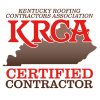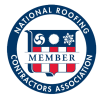Roofs are arguably one of the most taken-for-granted components of a household. We count on roofs to be there when we need them, adequately preventing the likes of snow, rain and everything else Mother Nature can throw at them from entering our properties. But there are a lot of sub-components that go into a well-functioning roof – and if any one of these sub-components isn’t working properly, then the roof is unlikely to work up to its full potential, resulting in water intrusion and mold growth inside the property. What’s more is that you’re likely not going to see many of these other components, as they tend to be installed beneath the shingles.
In order to help you better understand the various pieces that make up a roof, we’ve put together this Roof Anatomy 101 guide. Here’s what you need to know:
Roof Anatomy 101: What Components Make Up a Roof?
Here’s a look at the makeup of the roof, starting from the plywood on up:
Roof Deck
Think of the roof deck as the foundation of the roof. Commonly made of wood or plywood, this is the base located underneath the roof that helps to support the shingles. Typically, the roof deck creates that initial barrier between a property’s roof and its attic.
Underlayment and Barriers
Roof underlayment and moisture barriers are installed on the roof deck, prior to flashing and shingles. Underlayment is typically a synthetic or felt material that helps add an additional protective barrier between the roof deck and the shingles. It helps safeguard a property from water infiltration, essentially keeping water out of the attic. Ice and water barriers are typically installed on the roof deck around eaves, valleys, and other areas where more water runoff is likely to accumulate on the roof. Just think of these barriers as added protection from moisture intrusion.
Flashing
One of the most common problem spots for roofs is bad flashing. Flashing is installed around joint openings, chimneys, vents, skylights and other areas on the roof. Typically made of metal, it’s designed to direct water away from the more sensitive areas of the roof where shingles meet walls, dormers, or other features.
Shingles
Next, come the shingles. This is the part of the roof that is the most visible on a home, and they’re installed over the underlayment, barriers, and roof deck. Shingles are installed up to the very edge of the roofline and work to direct water runoff from the roof to the gutters for safe discharge away from the property. Shingles come in various materials, shapes, sizes, and colors to match the facade and look and feel of a property. Shingles also help work to insulate a property, and can help reduce heating and cooling bills. They can help improve a property’s aesthetics and increase the value of a home.
Other Parts of a Roof
Aside from the basics that we’ve laid out in this piece, there are a few other components of a roof that bear mentioning:
- Hip: The part of a roof where roof planes meet; special hip and ridge shingles are necessary.
- Roof ridge vent: The roof ridge is the top part of the roof where the planes meet. Many roofs today have a horizontal vent running the length of this ridge that allows air to escape from the attic.
- Roof valleys: Roof valleys are sloping parts of the roof that tend to join sections at an angle toward the gutters. Since valleys tend to accumulate more water runoff than other parts of the roof, ice and water barriers are best installed beneath the shingles to add an extra layer of protection between the property and the shingles.






